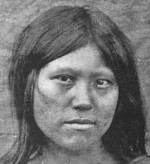bicicleur 2
Regular Member
- Messages
- 6,369
- Reaction score
- 1,403
- Points
- 113
It just occurred to me that the authors might be confusing people when they describe samples in Latvia as "Middle Neolithic". There is no real "Neolithic" in Latvia. The authors have adopted the confusing habit of Russian researchers of calling hunter-gatherer societies with pottery "Neolithic". The Neolithic, as in "agriculture" and "animal domestication", didn't arrive in these far Northeastern European areas until it was brought by Corded Ware.
@Bicicleur,
So this would explain why no J2 y dna, and why there is a "Caucasus" component without resorting to bride exchange or theft across the Caucasus as the only explanation?
Which R1b clades do you speculate would have wound up south of the Caspian initially versus north of it, or were they the same, other than R2?
Since the admixture increased over a thousand year time period was it just a function of more such people crossing the Caucasus?
little is known along with what Y-DNA this CHG crossed the Caucasus
I would say the Khvalynsk newcomer was a carrier of the CHG.
| Samara Eneolithic | Russia | Khvalynsk II, Volga River, Samara [I0122/SVP 35] | M | 4700-4000 BC | R1b1 | M415 | H2a1 | Mathieson 2015 | I0122 Russia Khvalynsk R1b1-M415(xP297) calls |
these are the Y-calls acording to Genetiker
https://genetiker.wordpress.com/y-snp-calls-for-i0122/
positive for R1b and R1b1,
1 positive and 17 negative for R1b-V88 which means the positive is either a false one or this sample is early pré-V88
negative for R1b-P297
this is the only early sample I know with CHG admixture in Eastern Europe of which Y-DNA is known
the CHG in this sample is higher than in the Yamna individuals
which other clades brought CHG to Eastern Europe I don't know, but I would guess R1b and/or J2
it seems like the Y-ancestor of the Yamna population both sampled and hypothysised, R1b-P297 was allready in Eastern Europe before admixture with CHG occured ; I guess the carriers of the CHG were rather small in numbers and their Y-DNA got extinct by the time of Yamna and Afanasievo
the same goes for the R1b that arrived in Transcaucasia : they were very small in numbers and the autosomal DNA shifted from EHG to CHG quite rapidly ; that is why I mentioned that R1b-V88 expanded after arrival in Transcaucasia : the autosomal DNA would allready have shifted before the Y-DNA started to expand ; it is even so that the autosomal of the R1b-V88 in Els Trocs is EEF with some WHG and no EHG nor CHG ; of course that was almost 5.000 years later than arrival in Transcaucasia ; you see the same in R1b Villabruna who was 100 % WHG, he was a loner in his Y-DNA and his mtDNA was European
it's all just a theory of mine, but in this study I find some confirmation
p.s. you're right about the middle neolithic being mesolith with pottery, alltough the transition from HG to farmer in this area is not very clear
the late neolithic sample coïncides with the onset of CW herders





